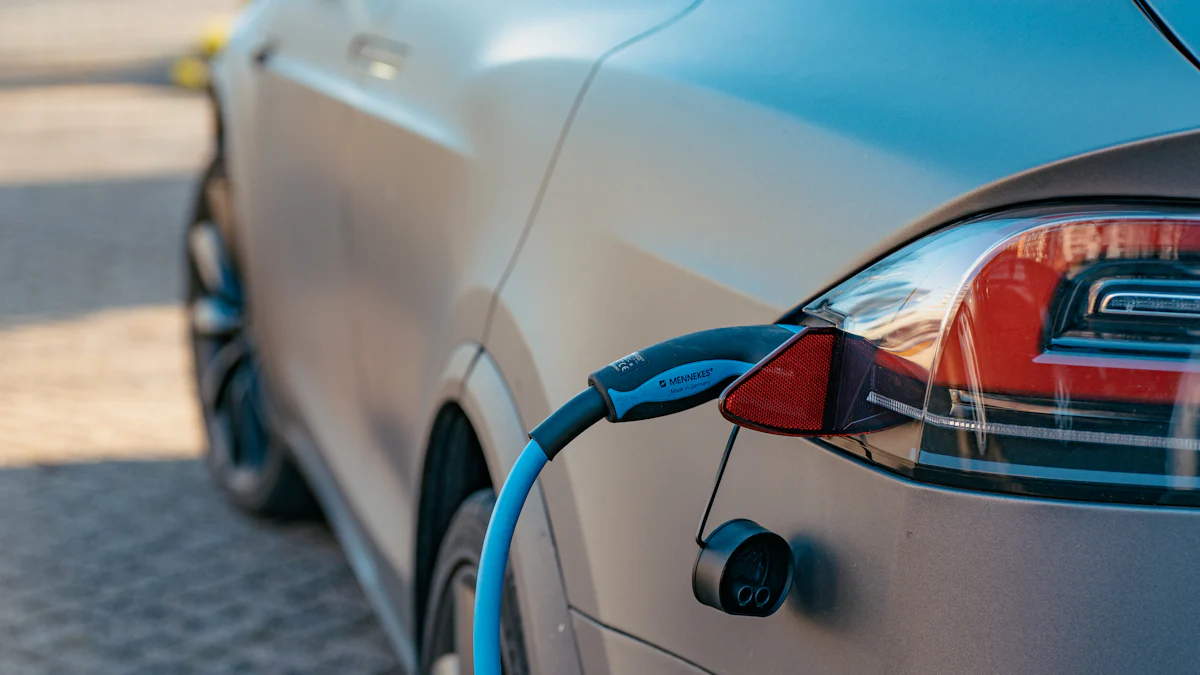Key Trends Shaping the Automotive Industry in 2024

The automotive industry constantly evolves, driven by technological advancements and shifting consumer preferences. Staying updated with emerging trends is crucial for industry stakeholders to remain competitive. The year 2024 promises significant changes, with innovations poised to reshape the landscape.
Technological Advancements in the Automotive Industry

Electric Vehicles (EVs) in the Automotive Industry
Growth in EV Sales
The automotive industry has witnessed a significant surge in electric vehicle (EV) sales. One in every five cars sold globally is now electric. This growth reflects a shift toward sustainable transportation. Consumers are increasingly prioritizing environmental impact and fuel efficiency. Government incentives and subsidies have also played a crucial role in boosting EV adoption.
Advances in Battery Technology
Advances in battery technology have been pivotal for the automotive industry. Improved battery efficiency and reduced charging times have enhanced the appeal of EVs. Innovations in solid-state batteries promise longer ranges and increased safety. These advancements are driving the transition from internal combustion engines to electric powertrains.
Autonomous Driving in the Automotive Industry
Progress in Self-Driving Technology
Self-driving technology continues to evolve rapidly within the automotive industry. Autonomous vehicles (AVs) are expected to cover 40% of the mileage in Europe by 2030. Enhanced safety features and the integration of artificial intelligence are key drivers. Companies are investing heavily in developing Level 4 and Level 5 autonomous systems.
Regulatory Developments
Regulatory developments play a critical role in the deployment of autonomous vehicles. Governments are establishing frameworks to ensure safety and reliability. These regulations address issues such as liability, cybersecurity, and data privacy. The automotive industry must navigate these regulatory landscapes to bring AVs to market successfully.
Connectivity and IoT in the Automotive Industry
Smart Vehicle Features
Connectivity through the Internet of Things (IoT) is transforming the automotive industry. Smart vehicle features include real-time diagnostics, predictive maintenance, and enhanced infotainment systems. Cloud computing enables seamless data transmission, improving vehicle performance and user experience.
Vehicle-to-Everything (V2X) Communication
Vehicle-to-Everything (V2X) communication is another groundbreaking advancement. V2X technology allows vehicles to communicate with each other and with infrastructure. This connectivity enhances road safety and traffic management. The integration of 5G technology further boosts the capabilities of V2X systems.
Market Dynamics in the Automotive Industry
Shifts in Consumer Preferences in the Automotive Industry
Increased Demand for Sustainable Vehicles
Consumers increasingly prioritize sustainability in vehicle choices. A McKinsey survey revealed a significant shift toward eco-friendly cars in China, one of the largest automotive markets. Respondents from 19 major cities showed a preference for greener models. This trend reflects a global movement towards ethical and environmentally conscious purchasing decisions. The Environmental Protection Agency (EPA) has collaborated with stakeholders to promote hybrid and electric vehicles, further driving this demand.
Rise of Car-Sharing Services
Car-sharing services have gained popularity as consumers seek cost-effective and flexible transportation options. Urbanization and changing attitudes towards vehicle ownership contribute to this rise. Car-sharing platforms offer convenience and reduce the need for personal vehicle ownership. This trend aligns with the broader shift towards sustainable and shared mobility solutions.
Global Supply Chain Challenges in the Automotive Industry
Semiconductor Shortages
The automotive industry faces significant challenges due to semiconductor shortages. These shortages disrupt production and delay vehicle deliveries. The high demand for semiconductors in various industries exacerbates this issue. Automakers must navigate these supply chain disruptions to maintain production schedules and meet consumer demand.
Impact of Geopolitical Tensions
Geopolitical tensions impact the global automotive supply chain. Trade disputes and political instability create uncertainties for manufacturers. Countries like Mexico and Vietnam emerge as key players in the supply chain due to strategic advantages. Mexico benefits from nearshore production trends, while Vietnam attracts companies shifting production from China. Initiatives like India's Production Linked Incentive (PLI) scheme promote domestic production and reduce reliance on foreign supply chains.
Environmental and Regulatory Changes in the Automotive Industry

Stricter Emission Standards in the Automotive Industry
Impact on Vehicle Design
Stricter emission standards have a profound impact on vehicle design. Automakers must innovate to meet these regulations. Engineers focus on reducing carbon emissions and improving fuel efficiency. Lightweight materials and aerodynamic designs become essential. Electric and hybrid powertrains gain prominence. The Environmental Protection Agency (EPA) aims to avoid over 7 billion tons of carbon emissions with new standards. These changes drive significant advancements in automotive technology.
Compliance Strategies
Automakers develop various strategies to comply with emission standards. Investments in research and development increase. Companies adopt advanced manufacturing techniques. AI and automation enhance production efficiency. Compliance involves rigorous testing and certification processes. The International Automotive Taskforce (IATF) publishes rules for maintaining IATF 16949 certification. This certification ensures adherence to quality management systems. Collaboration with regulatory bodies becomes crucial for compliance.
Government Incentives in the Automotive Industry
Subsidies for EVs
Government incentives play a vital role in promoting electric vehicles (EVs). Subsidies reduce the cost of EV ownership. Tax credits and rebates make EVs more affordable. Governments implement policies to encourage EV adoption. Infrastructure development, such as charging stations, receives support. These measures boost consumer confidence in EVs. Increased EV sales contribute to reduced carbon emissions.
Support for Green Technologies
Governments support green technologies through various initiatives. Funding for research and development accelerates innovation. Grants and loans assist companies in adopting sustainable practices. Policies promote the use of renewable energy sources. Public-private partnerships drive advancements in green technologies. These efforts align with global sustainability goals. The automotive industry benefits from this support, leading to a greener future.
The automotive industry in 2024 is undergoing transformative changes. Key trends include the rise of electric vehicles, advancements in autonomous driving, and the integration of connectivity through IoT. Market dynamics show a shift towards sustainable vehicles and car-sharing services. Global supply chain challenges, such as semiconductor shortages and geopolitical tensions, impact production. Stricter emission standards and government incentives drive innovation and compliance.
Adapting to these changes remains crucial for industry stakeholders. Staying informed about emerging trends ensures competitiveness. Proactive engagement with technological advancements and market shifts will shape the future of the automotive landscape.
See Also
Enhancing Decision-Making: Improving Automotive Demand Prediction
Unlocking Your Automotive Supply Chain's Potential
Enhancing Supply Chain Efficiency: 5 Key Trends
